#Morosco Theatre
Text
THE OTHER ROSE
1923
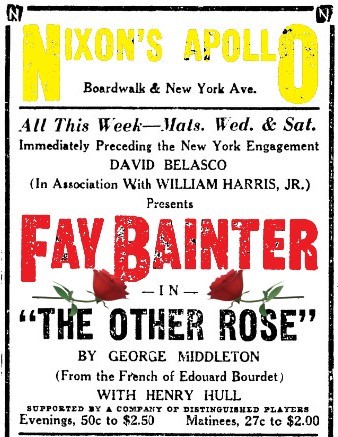
The Other Rose is a play by George Middleton based on a French play by Edouard Bourdet. It was originally produced and directed by David Belasco, in association with William Harris Jr. It starred Fay Bainter as Rose Coe. Henry Hull was featured as Tony Mason.
Playwright Middleton was a ‘Jersey Boy’, born in Paterson NJ in 1880.
The play takes place at a cottage in Whale Harbor, Maine.
Rose Coe, the 28 year-old daughter of a prematurely aged scientist, rents a cottage in Maine for herself, her father Professor Andrew Coe, and her 12 year-old brother Johnny, only to discover that Tony, the young son of the landlady did not intend it to be rented. It was, he said, a love shrine, where he had met the passion of his life the previous season; "the other Rose." He tries to put the new tenants out, with the unexpected consequences; love.”
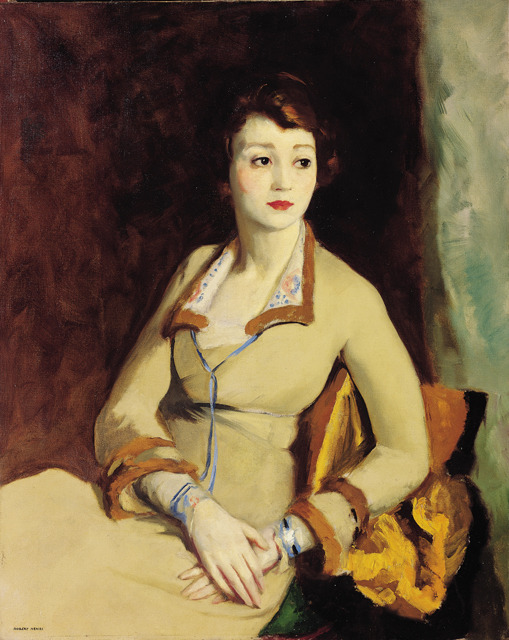
Fay Bainter (1892-1968) started acting on Broadway in 1912. This was the 8th of her 25 Broadway appearances. In Hollywood, she won an Academy Award for Jezebel (1938).
"I don't think I have ever been as happy in a part as I am in playing Rose Coe. It is a real pleasure to play a modern American girl of such high ideals and one who is so essentially human in every respect. I regard Rose as a girl I would be very glad to know in real life. She is the sort I would like to have come and stay with me and I feel that her friendship would be distinctly worth while. There Is no affectation or pretense about Rose. She is sincere and honest and I try to play her in a natural, straightforward manner. My interest in her is unusually keen and I approach every performance with the desire to give my best that the audience may know and love her as I do. It is really delightful to be playing in such a charming romance as 'The Other Rose.'"

Henry Hull (1890-1977) was ‘born in a trunk’ to a theatrical family. His father was once a press agent for David Belasco. In 1933, Hull created the role of Jeeter Lester in the long-running play Tobacco Road. He had started acting on Broadway at age 21. This was his 12th Rialto appearance.
Rehearsals began on November 5th at the Belasco Theatre in NYC. This was Bainter’s first collaboration with Belasco.
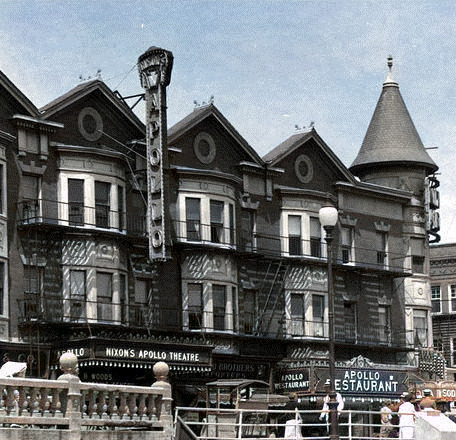
The Other Rose opened at Nixon’s Apollo Theatre in Atlantic City on December 3, 1923. After AC, the play traveled to DC, holding forth at the National.
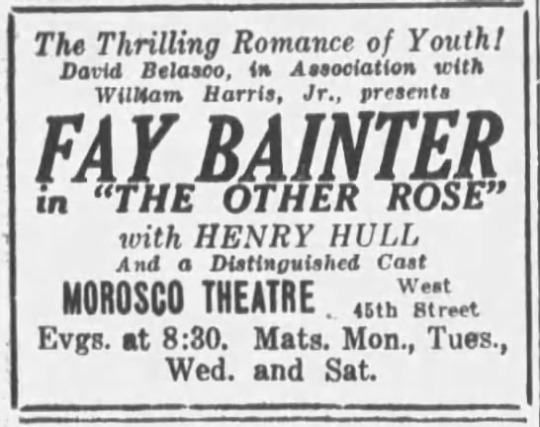
The Other Rose opened on Broadway at the Morosco Theatre on December 20, 1923.
ABOUT THE VENUE: The Morosco Theatre (217 West 45th Street) was built in 1917 and named for theatre manager Oliver Morosco. In 1982, despite protests, it was razed to make way for the Marriott hotel.
"’The Other Rose' is an obvious play but it is a sweet play nevertheless. In this day of stark, forthright realism, one should be thankful for a sweet play. Perhaps, if you are a bit old-fashioned, you will wish that there were more of them. I do.” ~ BRETT PAGE

“There are no surprises and no big moments. But there are many laughs.” ~ BURNS MANTLE

“Poor Miss Bainter was obliged to waste her valuable time on a role that could have played by an amateur.” ~ ALAN DALE
The Other Rose ran for 84 performances, closing in March 1923. Four months later, Bainter gave birth to her only child, Reginald S. Venable Jr.
“I was only a raw girl, with no better sense than to ape Mrs. Fiske in everything she did.” ~ FAY BAINTER, about her youthful stage work
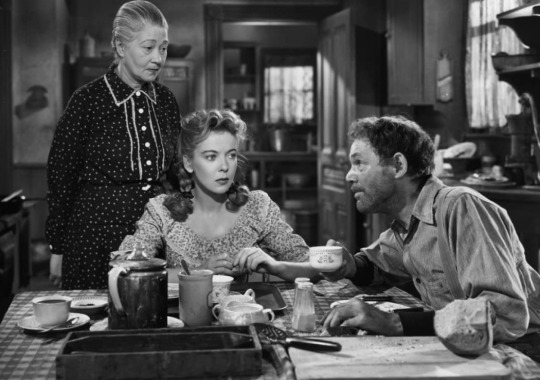
In 1947, Bainter reteamed with Hull as Ida Lupino’s parents in the film Deep Valley. Nearly 25 years after first meeting, Rose and Tony were reunited.
#The Other Rose#Fay Bainter#Henry Hull#George Middleton#1923#Broadway#Broadway Play#Atlantic City#Nixon's Apollo Theatre#David Belasco#Morosco Theatre#romance
2 notes
·
View notes
Photo

Marilyn Monroe arriving at Morosco Theatre in New York, on March 24, 1955.
2K notes
·
View notes
Text
Arthur Miller's "Death of a Salesman", starring Lee J. Cobb, Arthur Kennedy, Mildred Dunnock , Cameron Mitchell, and directed by Elia Kazan, opened at Morosco Theatre in NYC on February 10, 1949.



Arthur Miller's "Death of a Salesman", starring Lee J. Cobb, Arthur Kennedy, Mildred Dunnock , Cameron Mitchell, and directed by Elia Kazan, opened at Morosco Theatre in NYC on February 10, 1949.
30 notes
·
View notes
Text
On This Day
22 January 1938
Our Town by Thornton Wilder premiered at the McCarter Theatre in Princeton, New Jersey.
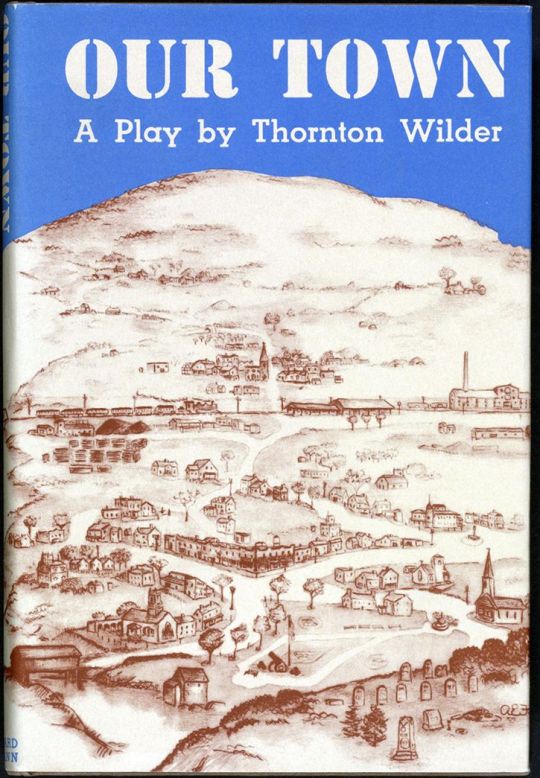

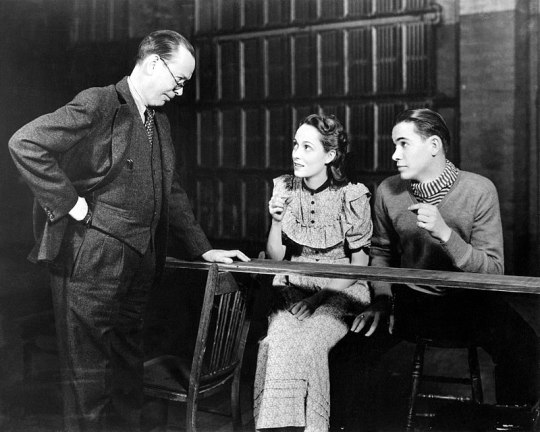
It soon after opened at the Wilbur Theatre in Boston on January 25. It moved to the Henry Miller's Theatre in New York on February 4, then later moved to the Morosco Theatre.
Wilder won the Pulitzer Prize for Drama in 1938 for Our Town.
#theatre#theater#history#dramatist#dramatic literature#on this date#on this day#this day in history#thornton wilder#our town#1930s#dark academia#light academia#classic academia#stage play#metatheatre#pulitzer prize#stage#literature
1 note
·
View note
Text
Raleigh little theatre auditions

Side By Side received five 1977 Tony Award® nominations - for Best Musical, Best Featured Actor in a Musical (David Kernan and Ned Sherrin), and Best Featured Actress in a Musical (Millicent Martin and Julie N. The show made its Broadway debut, directed by Ned Sherrin, with musical staging by Bob Howe, on Apat the Music Box Theatre, later transferred to the Morosco Theatre, and played for 384 performances before closing on March 19, 1978. Subtitled “A Musical Entertainment,” Side By Side By Sondheim features the music and lyrics of Stephen Sondheim as well as the music by Leonard Bernstein, Mary Rodgers, Richard Rodgers, and Jule Styne. Musical gems from the Sondheim songbook include: “Comedy Tonight” (from A Funny Thing Happened On The Way To The Forum) and “Love Is in the Air” (dropped from Forum) “If Momma Was Married” (with music by Jule Styne, from Gypsy) ““Send in the Clowns” (from A Little Night Music) “I Never Do Anything Twice (from the film The Seven Percent Solution) “Losing My Mind” and “I'm Still Here,” and “Could I Leave You?” (from Follies) and many, many more. “I almost wore it out, memorized it, made up scenarios to go with the songs.” Wilson saw touring production of Side By Side in late 19. “I first became of this show when I heard the original Broadway cast album in summer of 1977,” recalls RLT guest director Brent Wilson. The 79-year-old Sondheim also received the 2008 Special Tony Award for Lifetime Achievement in the Theatre, as well as the 1985 Pulitzer Prize in Drama for Sunday In The Park With George and Kennedy Center Honors in 1993. New York City-born composer and lyricist Stephen Joshua Sondheim is a seven-time Tony Award® winner - for Best Score and Best Lyrics for Company (1971) and for Best Score for Follies (1972), A Little Night Music (1973 Best Score), Sweeney Todd (1979), Into The Woods (1988), and Passion (1994 - who also took home the 1990 Academy Award for Best Song for “Sooner or Later (I Always Get My Man)” from Dick Tracy. Raleigh Little Theatre's presentation of Side By Side By Sondheim, performed under the stars on May 8-9 and 15-16 in RLT's Louise “Scottie” Stephenson Amphitheatre, showcases the best of the best of Broadway's best contemporary songwriter. Side By Side By Sondheim showcases the best

0 notes
Photo

Tallulah Bankhead at the Morosco Theatre during the Broadway run of Reflected Glory, September 21, 1936. Photo by Lucas-Pritchard
93 notes
·
View notes
Text
MIKE ANGELO
January 8, 1923
Starting on January 1, 2019, all published works (except sound recordings) copyright 1923 enter public domain, meaning that no royalty or performance fee can be charged.
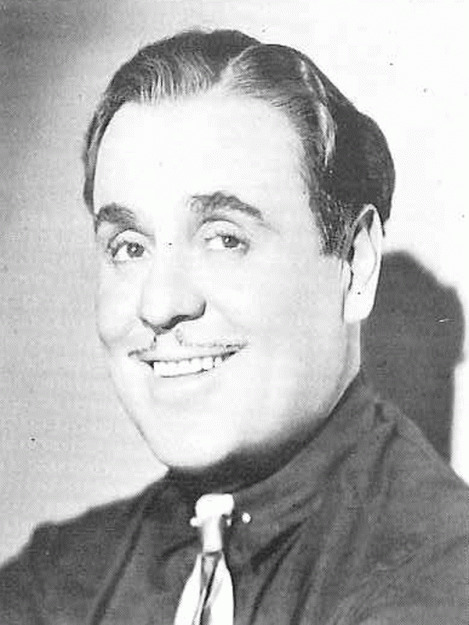
Mike Angelo is described as a comedy in three acts set in New York City. The story concerned an artist who believed himself to be a descendant of Michelangelo. He allows a Russian painter to take credit for his work in order to win the girl he adores.
Before arriving in New York City, the play ran in Southern California, where star Leo Carrillo was a native. The Broadway production ran 48 performances.
PLAYWRIGHT
Edward A. Locke (1869–1945) was born in England. On Broadway, he wrote nine plays and the book for one musical. His most popular work was titled Climax (1909), which was revived four times and filmed twice.
CAST (6M 2F)
Leo Carrillo (above) played the title role, one of nine plays he performed in on Broadway. He was often cast as ethnic types (Italians, Mexicans, Gypsies). His cousin was Broadway star William Gaxton. In Hollywood, he appeared in more than 90 films but is best remembered from the television series “The Cisco Kid” (1950-56) playing Pancho, a role that he had previously played in several films. A preservationist and conservationist, Carrillo served on the California Beach and Parks commission for eighteen years. As a result a Malibu beach is named Leo Carrillo State Park in his honor. Fittingly, this beach named for an actor appears in many movie and TV productions due to its dramatic cliffs, rocks and cave. He died in 1961.
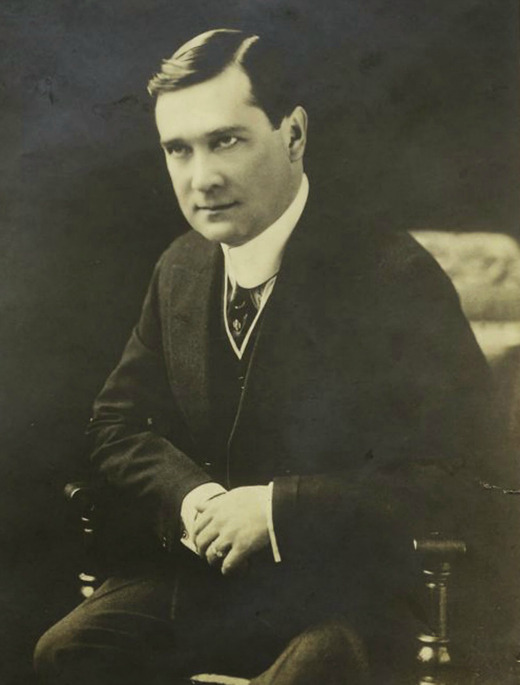
PRODUCER / THEATRE OWNER
Oliver Morosco (1875-1945) was a theatrical impresario as well as an acrobat, and operated Morosco's Grand Opera one of San Francisco's leading theaters. Morosco began producing plays in New York City in 1906 and mounted over 40 productions on Broadway. In 1926 he filed for bankruptcy, his fortune lost in part due to a large speculative purchase of land in California where he planned to create a development called "Morosco Town". At the age of 69, Morosco was struck and killed by a streetcar in Hollywood.
VENUE
Morosco Theatre (217 West 45th Street) was built by the Shuberts, who constructed it for Oliver Morosco in gratitude for his helping them break the monopoly of the Theatrical Syndicate. It had approximately 955 seats. It opened to the public on February 5, 1917 with Canary Cottage, a musical with a book by Morosco and a score by Earl Carroll. The Shuberts lost the building in the Depression and City Playhouses, Inc. bought it at auction in 1943. It was sold in 1968 to Bankers Trust Company and, after a massive "Save the Theatres" protest movement failed, it was razed in 1982.
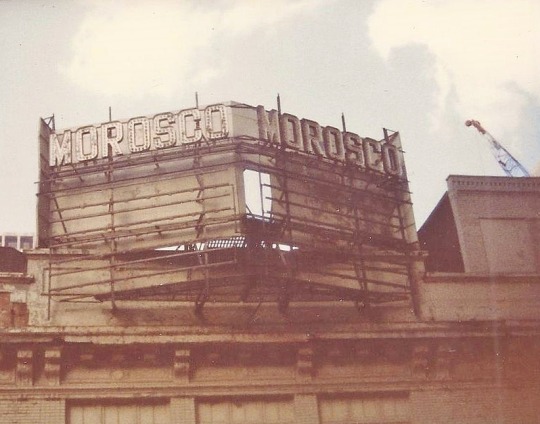
#Mike Angelo#1923#Morosco#Morosco Theatre#Oliver Morosco#Broadway#Theatre#Stage#Public Domain#Leo Carrillo#Edward A. Locke
1 note
·
View note
Photo
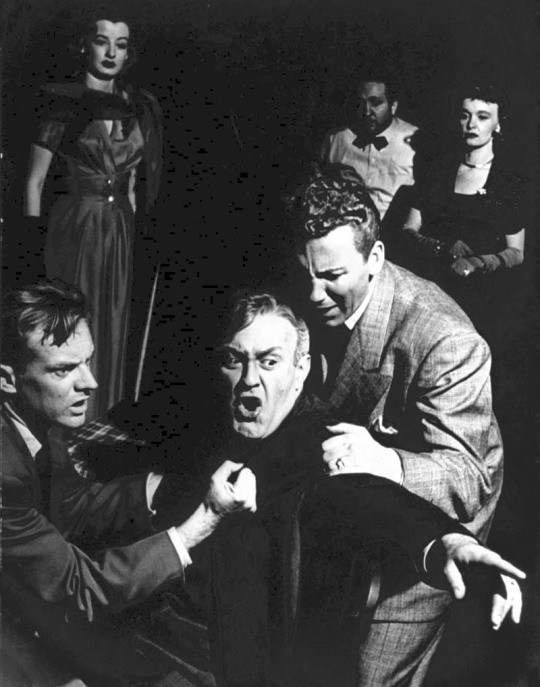
On February 10, 1949, Arthur Miller's Death of a Salesman opened at Broadway's Morosco Theater. Under the direction of Elia Kazan, the play starred Lee J. Cobb, Mildred Dunnock, Arthur Kennedy, and Cameron Mitchell. Death of a Salesman won the Pulitzer Prize and earned six Tony Awards, including Best Play, Best Featured Actor (Arthur Kennedy), Best Director (Elia Kazan), and Best Scenic Design (Jo Mielziner).
In his review in the Daily News, John Chapman wrote, “’Death of a Salesman,’ which was presented last evening at the Morosco, is a fine work in the American theatre. I cannot urge it upon you too strongly. To see it is to have one of those unforgettable times in which all is right and nothing is wrong.”
Above: Arthur Kennedy (as Biff), Lee J. Cobb (as Willy Loman), and Cameron Mitchell (as Happy) in the original production of Death of a Salesman.
Photo: W. Eugene Smith for Life magazine via Getty Images/the Guardian
#New York#NYC#vintage NY#old New York#1940s#W. Eugene Smith#Death of a Salesman#Arthur Miller#theater#Broadway#Lee J. Cobb#Arthur Kennedy#Cameron Mitchell#Elia Kazan#Mildred Dunnock#drama#tragedy#Pulitzer Prize#Tony Award
112 notes
·
View notes
Text
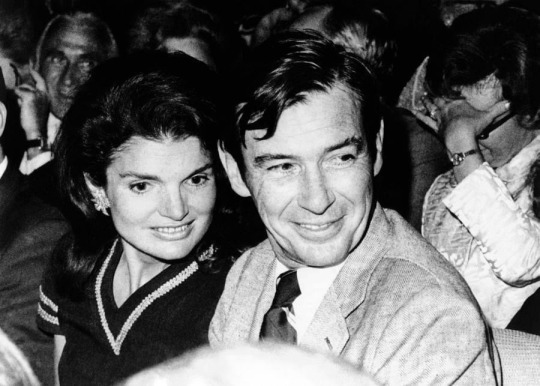
21 May 1969
Jacqueline Onassis & Edward Larrabee Barnes at the Morosco Theatre in New York City for a performance of ‘Forty Carats’
#jackie kennedy#jackie onassis#jacqueline kennedy#vintage#icons#the kennedys#1960s#60s#john f kennedy#jfk#jackie o#60s icons#60s nostalgia#60s vintage#60s style#60s girl#60s hair#60s fashion#60s aesthetic#first lady#fashion icon#iconic women#vintage nyc#vintage new york#vintage celebrities#vintage beauty#vintage style#vintage women#american vintage
15 notes
·
View notes
Photo

Marilyn Getting Ready 1955 by Ed Feingersh #Repost @vintagemoviestars ・・・ Marilyn Monroe getting ready in her suite at the Ambassador Hotel, New York, 1955. The actress was on her way to see the Broadway premiere of Tennessee William‘s Cat on a Hot Tin Roof at the Morosco Theatre. Photos by Ed Feingersh. • • • #marilynmonroe #oldhollywood #classichollywood #goldenage #goldenera #history #nostalgia #vintage #retro #movie #film #cinema #1950s #50s https://www.instagram.com/p/CXJ7_FMMfqR/?utm_medium=tumblr
#repost#marilynmonroe#oldhollywood#classichollywood#goldenage#goldenera#history#nostalgia#vintage#retro#movie#film#cinema#1950s#50s
4 notes
·
View notes
Text
BEHOLD, THE BRIDEGROOM
1927
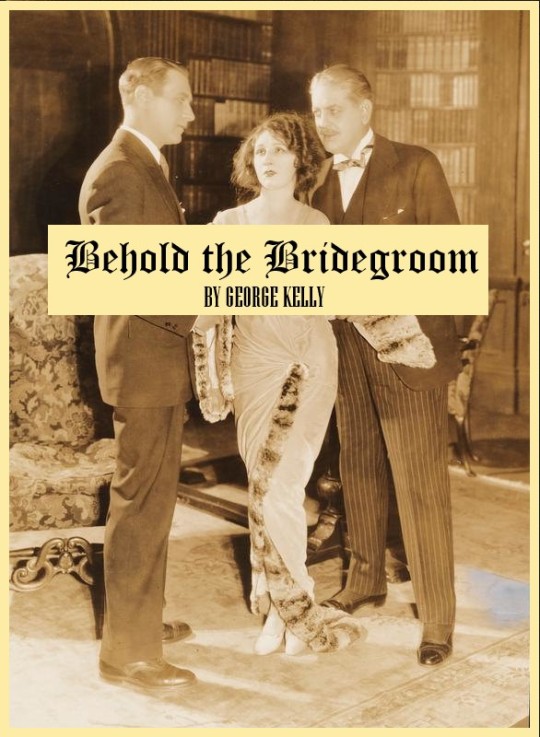
Behold, the Bridegroom is a three-act play by George Kelly. It was originally produced by Rosalie Stewart and directed by Mr. Kelly. It starred Judith Anderson.
Producer Rosalie Stewart had to arrange for the loan of Anderson with her manager, David Belasco. Rehearsals began the first week in November 1927.
The play takes place at the Lyle Estate at Shadow Brook, just beyond the city line.
Antoinette Lyle, a wealthy, high-living young woman begins to have second thoughts about her wanton ways when she meets a sensitive young man who intrigues her. By the time they meet again, she has fallen seriously ill.
The title is found in the Bible.
“...and in the middle of the night a cry was made, Behold, the bridegroom comes; go forth to meet him!” ~ MATTHEW 25:6
Kelly originally considered calling the play Till the Day of Her Death, which is also Biblical.
“....As to Michal, daughter of Saul, she had no child till the day of her death.” ~ 2 SAMUEL 6:23
George Kelly (1887-1974) was a prolific playwright who was also Grace Kelly’s uncle. He was the author of Reflected Glory, The Show Off, The Torchbearers, and Craig’s Wife, among others.
Judith Anderson (1897-1992) was an Australian actress who had a successful career in stage, film and television. She won two Emmy Awards and a Tony Award and was also nominated for a Grammy Award and an Academy Award. In 1960 she was made a Dame by Queen Elizabeth II.

“I will not become one of those caricatures of women that I’m running into all over the world - disillusioned and divorced, and married and divorced again - like a lot of horrible monkeys!” ~ ANTOINETTE LYLE in BEHOLD, THE BRIDEGROOM

The play opened at the Apollo Theatre on the Boardwalk in Atlantic City on November 28, 1927.
With two weeks between The Great Wooden and the Great White Ways, the play polished further at Cort-Jamaica Theatre in Brooklyn.

Behold, the Bridegroom opened on Broadway on December 26th at the Cort Theatre (now the James Earl Jones Theatre).

The night opened on what has been called ‘the busiest night in Broadway history’, sharing attention with 10 (!) other plays having their first performances. This was later blamed for the play’s short run. Other Broadway plays debuting on Boxing Day 1927 include:
Bless You, Sister at the Forrest Theatre
Venus at the Theatre Masque
Celebrity at the Lyceum Theatre
Paradise at the 48th Street Theatre
It Is To Laugh at Eltinge 42nd Street Theatre
L'Aiglon at the Cosmopolitan Theatre
Excess Baggage at the Ritz Theatre
White Eagle at the Casino Theatre
Mongolia at the Greenwich Village Theatre / Mansfield Theatre
Restless Women at the Morosco Theatre
“Fannie Hurst, the popular Manhattan writer of novels, stories, and plays, is believed to have set a precedent recommended to vainer and more self-conscious playwrights. The other night her new comedy ‘It Is to Laugh,’ opened. Between acts cries of 'Author!' went up. Looking about the theater, it was found she could not be located. An usher, dispatched to solve the mystery, returned with a report that she was down street, attending George Kelly's new play, ‘Behold, the Bridegroom' which, say old-timers, is something quite new under the sun.” ~ GILBERT SWAN
During the month of December 1927, Broadway hosted 17 plays and musicals.
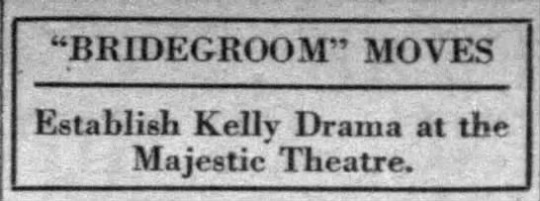
It moved to the Majestic Theatre in February 1928. It closed in March after 88 performances. After Broadway, the play, headed by Anderson, moved to the Shubert in Boston, playing there through the end of March 1928.
The play’s ambiguous, somewhat mystical ending was also blamed for its short stay on the Rialto.
The play was chosen by Burns Mantle to be published in his Best Plays of 1927 collection. It was also short-listed for the Pulitzer Prize for Drama.
In 1988, the play was revived off-off-Broadway on 42nd Street by the Heritage Theatre Company.

#Behold the Bridegroom#George Kelly#Judith Anderson#Broadway#Broadway Play#Atlantic City#Nixon's Apollo Theatre#Majestic Theatre#James Earl Jones Theatre#Broadway History#1927
3 notes
·
View notes
Photo
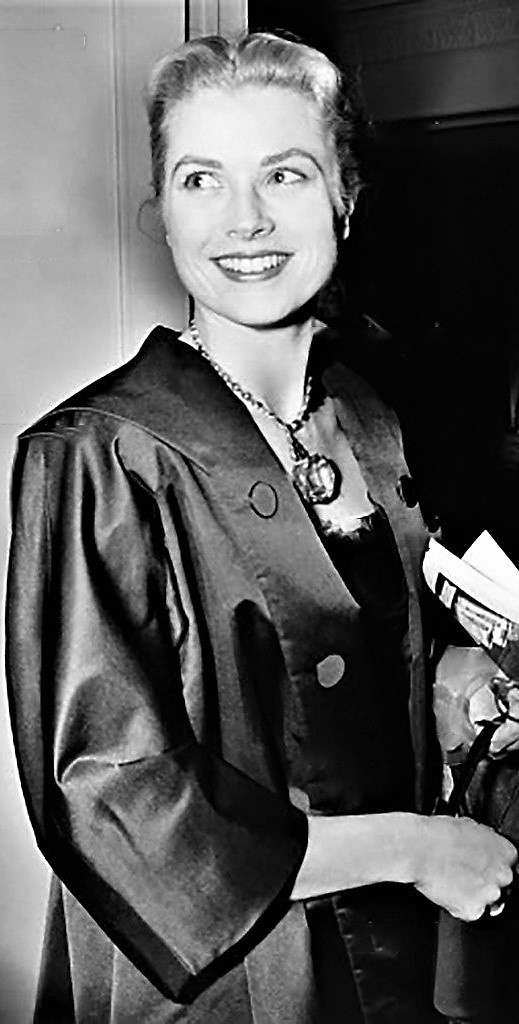

Grace Kelly at the opening of Tennessee Williams' new play Cat on a Hot Tin Roof at the Morosco theatre, 24 March 1955
150 notes
·
View notes
Text
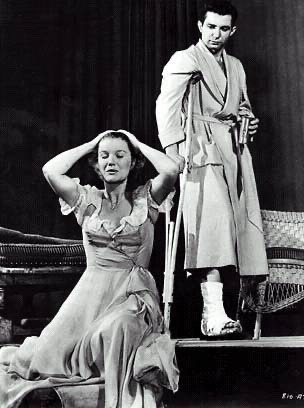

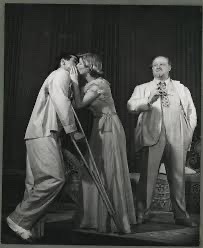
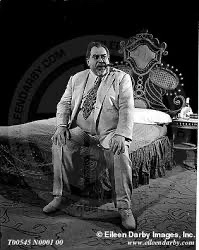


Tennessee Williams’ play “Cat on a Hot Tin Roof” opened at the Morosco Theatre in NYC on March 24, 1955, two days before his 44th birthday. The play would win Williams his second Pulitzer Prize.
Staged by Elia Kazan, the play starred Barbara Bel Geddes, Burl Ives, Mildred Dunnock, and Ben Gazzara.
36 notes
·
View notes
Text
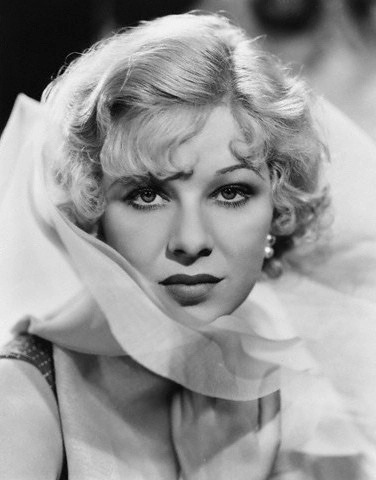
Glenda Farrell (June 30, 1904 – May 1, 1971) was an American actress. With a career spanning more than 50 years, Farrell appeared in over 100 films and television series, as well as numerous Broadway play. She won an Emmy Award in 1963 for Outstanding Supporting Actress for her performance as Martha Morrison in the medical drama television series Ben Casey.
Farrell began acting on stage as a child and continued with various theatre companies and on Broadway before signing with Warner Bros. Embodying the brassy blonde character of the early talkies. Farrell was a signature 1930s Warner Bros. star, starring in films such as Little Caesar (1931), I Am a Fugitive from a Chain Gang (1932), Mystery of the Wax Museum (1933) and Lady for a Day (1933). Starting with Smart Blonde (1937), Farrell played Torchy Blane, the hard-boiled, wisecracking reporter in a series of popular films; which later was credited by comic book writer Jerry Siegel as the inspiration for the DC Comics reporter, Lois Lane. After leaving Warner Bros. in 1939, Farrell remained active in film, television and theatre throughout rest of her career.
Farrell was born in Enid, Oklahoma, to Wilhelmina "Minnie" (nee Messer, 1879-1931) of German descent and Charles A. Farrell (1873-1937) of Irish and Cherokee descent. Farrell was the only daughter and had two younger brothers, Eugene and Richard. After her family moved to Wichita, Kansas, Farrell began acting on stage with a theatrical company at age seven, playing the role of Little Eva in the play Uncle Tom's Cabin. Farrell's mother had never achieved her desire of being an actress, encouraged and supported her daughter's acting interests. When her family moved to San Diego, California, a teenage Farrell joined the Virginia Brissac Stock Company. Farrell made the third honour roll in Motion Picture Magazine's "Fame and Fortune Contest". Her picture and biography were featured in the magazine's April 1919 issue, which also stated that Farrell had some experience in the chorus, vaudeville, and camp entertainments. Farrell received a formal education at the Mount Carmel Catholic Academy.
In 1928, Farrell was cast as the lead actress in the play The Spider and made her film debut in a minor role in Lucky Boy. Farrell moved to New York City in 1929, where she replaced Erin O'Brien-Moore as Marion Hardy in Aurania Rouverol's play Skidding. The play later served as the basis for the Andy Hardy film series. By April 1929, the Brooklyn Daily Eagle reported that she had played the role 355 times. Farrell appeared in a number of other plays, including Divided Honors, Recapture, and Love, Honor and Betray with George Brent, Alice Brady, and Clark Gable.
In 1930, she starred in the comedy short film The Lucky Break with Harry Fox, and in July 1930 Film Daily announced that Farrell had been cast in Mervyn LeRoy's film Little Caesar as the female lead, Olga Stassoff. Afterward, she returned to Broadway and starred in On the Spot at the Forrest Theater. At the time, Farrell conceded that motion pictures offered immense salaries, but felt the theater was the foundation of the actor's profession.[6] She appeared in several more plays.
In 1932, Farrell starred in the hit play Life Begins. Her performance caught the attention of Jack Warner, who signed her to a contract with the Warner Bros. film studio and cast her to recreate the role in Warner Bros.' film adaptation of Life Begins later that year. Farrell did not return to the stage until 1939.
In her first two years with Warner Bros., Farrell starred in 17 films, including Girl Missing (1933), Gambling Ship (1933), Man's Castle (1933) opposite Spencer Tracy, and Columbia Pictures' Lady for a Day (1933) by director Frank Capra. Farrell sometimes would work on three pictures that were shooting at the same time and managed to transition from one role to another effortlessly. She worked in over 20 movies between 1934 and 1936, starring in films such as Go into Your Dance (1935), Little Big Shot (1935) and High Tension (1936).
Farrell was close friends with fellow Warner Bros. actress Joan Blondell,[8] and throughout the early 1930s, they were paired as a comedy duo in a series of five Warner Bros. movies: Havana Widows (1933), Kansas City Princess (1934), Traveling Saleslady (1935), We're in the Money (1935) and Miss Pacific Fleet (1935). She also appeared with Blondell in the Academy Award-nominated Gold Diggers of 1935 and Gold Diggers of 1937 musical film series. Farrell and Blondell co-starred in a total of nine films. Together, they came to personify the smart and sassy, wisecracking dames of '30s and '40s film.
In 1937, Farrell began starring as Torchy Blane, the fast-talking wisecracking newspaper reporter.[9] Warner Bros. had started to develop a film adaptation of "MacBride and Kennedy" stories by detective novelist Frederick Nebel in 1936. For the film version, Kennedy is changed to a woman named Theresa "Torchy" Blane and is in love with MacBride's character. Director Frank MacDonald immediately knew whom he wanted for the role of Torchy Blane. Farrell had already proved that she could play hard-boiled reporters in Mystery of the Wax Museum (1933) and Hi, Nellie! (1934); and was quickly cast as Torchy with Barton MacLane playing detective Steve McBride in the first Torchy Blane film Smart Blonde (1937).
Smart Blonde was a surprise hit and became a popular second feature with moviegoers. Warner Bros. starred her in several more Torchy Blane movies opposite Barton MacLane. She portrayed Torchy in seven films from 1937 to 1939. The films took Farrell's popularity to a new level. She was beloved by the moviegoing public and received a huge amount of fan mail for the films. On her portrayal of the Torchy Blane character, Farrell said in her 1969 Time interview: "So before I undertook to do the first Torchy, I determined to create a real human being—and not an exaggerated comedy type. I met those [news-women] who visited Hollywood and watched them work on visits to New York City. They were generally young, intelligent, refined, and attractive. By making Torchy true to life, I tried to create a character practically unique in movies."
Along with starring in the Torchy Blane series, Farrell appeared in a number of other films, including Breakfast for Two (1937), Hollywood Hotel (1937), and Prison Break (1938). Additionally, she performed in several radio series, including Vanity and Playhouse in 1937, and Manhattan Latin with Humphrey Bogart in 1938.
Farrell was elected to a one-year term as the honorary mayor of North Hollywood in 1937, beating her competition Bing Crosby and Lewis Stone by a three-to-one margin. Even though it began as a Warner Bros. publicity stunt, Farrell took the job seriously, attending functions, presentations, and ceremonies. She was also put in charge when the North Hollywood Chamber of Commerce announced that it wanted to put sewers along Ventura Highway and started the groundwork for that project.
In 1939, Farrell left Warner Bros. when her contract expired. Several factors resulted in her decision including, feeling Warner Bros. was typecasting her as a newspaper reporter, a disagreement by Jack Warner for a pay rise, and wanting to return to the theatre. Farrell later told syndicated columnist Bob Thomas in 1952: "There's something more satisfying about working in a play. You get that immediate response from the audience, and you feel that your performance is your own. In pictures, you get frustrated because you feel you have no power over what you're doing".
In July 1939, Farrell starred in the lead role in the play Anna Christie at the Westport Country Playhouse, then followed that with a summer stock production of S. N. Behrman's play Brief Moment. She co-starred with Lyle Talbot and Alan Dinehart in the long-running play Separate Rooms at Broadway's Plymouth Theater for a successful 613-performance run throughout 1940 and 1941. In April 1942, she starred in the Broadway play, The Life of Reilly.
Farrell returned to motion pictures in 1941, starring in director Mervyn LeRoy's film noir, Johnny Eager. Throughout the '40s, '50s, and '60s, Farrell continued to appear in numerous films, including the Academy Award-nominated The Talk of the Town (1942), Heading for Heaven (1947) and the 1954 Charlton Heston adventure epic Secret of the Incas.
Farrell made her television debut in 1949 in the anthology series The Chevrolet Tele-Theatre. She appeared in over 40 television series between 1950 and 1969, including Kraft Theatre, Studio One in Hollywood, The United States Steel Hour, Bonanza, and Bewitched.
In 1963, she guest-starred in the ABC medical drama series Ben Casey as Martha Morrison in the two-part episode "A Cardinal Act of Mercy". She won the Primetime Emmy Award for outstanding performance in a supporting role by an actress. Farrell co-starred with her son Tommy Farrell in two comedy films in 1964: Kissin' Cousins with Elvis Presley and Jerry Lewis in The Disorderly Orderly.
Farrell briefly retired in 1968, but soon decided to return to acting. Farrell's final work in her long career was the Broadway play Forty Carats. She was appearing in Forty Carats at the Morosco Theatre until ill health forced her to leave the play a few months later. Farrell was eventually diagnosed with lung cancer.
In 1920, Farrell was hired to do a dance routine at a Navy benefit ball in San Diego. There she met her first husband, Thomas Richards. They were married from 1921 to 1929. Their son, actor Tommy Farrell, was born in 1921. In 1931, she was engaged to Jack Durant of the comedy duo "Mitchell and Durant" but never married him. She dated screenwriter Robert Riskin a few years later.
In 1941, Farrell married Dr. Henry Ross. The couple met when Farrell sprained her ankle during a performance of the play Separate Rooms and was treated backstage by Ross, who had been called forth from the audience. Ross was a staff surgeon at New York's Polyclinic Hospital and West Point graduate, who later served as chief of the public health section on General Eisenhower's staff. Farrell and Ross remained married until her death 30 years later. Farrell was a devout Catholic.
In 1971, Farrell died from lung cancer, aged 66, at her home in New York City and was interred in the West Point Cemetery in West Point, New York. When Ross, who did not remarry, died in 1991, he was buried with her.
Comic book writer Jerry Siegel credits Farrell's portrayal of Torchy Blane as the inspiration for the fictional Daily Planet reporter and Superman's love interest, Lois Lane. Siegel also named June Farrell, one of the characters in his Funnyman comic book series, after Farrell.
On February 8, 1960, Farrell received a star on the Hollywood Walk of Fame for her contribution to motion pictures, at 6524 Hollywood Boulevard.
In 1977, Farrell's husband Dr. Henry Ross donated 38 acres of land to the Putnam County Land Trust, establishing the Glenda Farrell–Henry Ross Preserve.
#glenda farrell#classic hollywood#classic movie stars#golden age of hollywood#old hollywood#1920s hollywood#1930s hollywood#1940s hollywood#1950s hollywood#1960s hollywood#1970s hollywood#hollywood legend
18 notes
·
View notes
Link
In 1882 playing The Lady of the Camelias. Abandoned after the surge of the turn-of-the-century gold rush, Robert Edmond Jones restored the acoustically perfect theatre and in July 1932 reopened the Central City Opera House on its fiftieth anniversary with Edna and Delos Chappell’s translation of Dumas’ play. Staged by Robert Edmond Jones, Camille starred Lillian Gish. The Colorado production was transferred to Broadway on November 1, 1932, at the Morosco Theatre for fifteen performances. Robert Garland (The New York World-Telegram) found Lillian Gish played the lady of the ca- melias “in just the proper key … a charmingly artificial resurrection of a charmingly artificial play, a museum piece from the half-forgotten eighties, staged by Robert Edmond Jones, who adores such things and acted in its leading role by an anachronistic lady who seemed somehow to belong.”
2 notes
·
View notes
Text
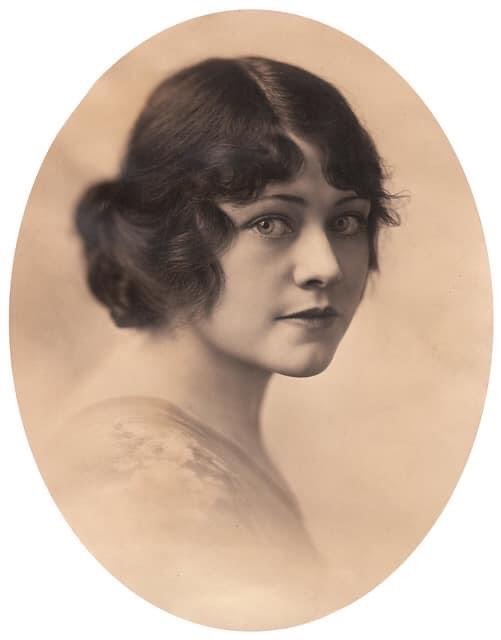
Peggy O'Neil: [NPG] The Ziegfeld Follies of 1927 and the Unexpected Husband in 1930. She was born Margaret O’Neil on June 16, 1898 in Gneeveguilla, Co. Kerry, Ireland (note: there is conflicting information about her birth and early life so I'm going with what was reported by the New York Times). Her family immigrated to America when she was a child, settling in Buffalo, New York. She began performing when still little and in 1910 made her professional stage debut in Chicago as a dancer in The Sweetest Girl in Paris. Peggy O'Neil with her co-star in Peg O' My Heart, 1914. Peggy O'Neil, Reginald Mason, and Christine Norman in Peg O' My Heart, 1914. O'Neil had a few more small stage roles and starred in some film shorts for the Lubin Manufacturing Company before her big break on September 2, 1913. That day theatre producer Oliver Morosco auditioned more than 400 young girls for the lead in a road production of J. Hartley Manners' comedy Peg O’ My Heart. O’Neil won the part and the following year was sent to Chicago to star as Peg. The play was a hit and ran for 26 weeks. The Chicago audience fell in love with the girl with the blue eyes, dark curls, and bubbly personality who embodied the quintessential Irish lass, a popular type on stage at the turn of the century. The play itself proved to be such a hit that at one point eight different versions were in production at the same time. Both Laurette Taylor (who originated the role) and Marion Davies would go on to star in film versions. O'Neil's turn as Peg led to other roles. Morosco casting her in two other Chicago productions—A Tale With a Wag and Mavourneen. Back in New York she starred on Broadway in The Flame. After a run in Chicago with Patsy on the Wing, she returned to Broadway in 1919 for Tumble. The New York Times singled her out for that last performance as being “much of the life of the show” and Theatre Magazine said "the other performers might well benefit from watching her acting." In 1920 she travelled to London where she had her greatest success playing the title role in the comedy Paddy The Next Best Thing. Adapted by William Gayer MacKay and Robert Ord from a novel by Gertrude Page, it was the story of a tomboy named Paddy (short for Patricia) whose father had wanted a son but got the next best thing. Opening on April 5, 1920, it ran for more than 850 performances at the Savoy Theatre, and O'Neil became the darling of London. One reviewer said of O'Neil's performance, "She has something of Ellen Terry's power of communicating her smiles and tears to the audience. I suspect that every young woman in the audience feels, in her heart, that she has been a Paddy." Yet she had her detractors. On October 20, 1920, the papers reported that O’Neil had been sent a box of poisoned chocolates. She ate one and was ill for days. Her little dog was not so lucky. He died that evening after eating one of the candies. Tests later found that the chocolates contained arsenic and strychnine. No suspects were ever arrested. In 1921, O’Neil inspired Harry Pease, Edward G Nelson, and Gilbert Dodge (two of whom were reportedly trying to court the actress who never married) to write a song in her honor. If her eyes are blue as skies, that's Peggy O'Neil If she's smiling all the while, that's Peggy O'Neil If she walks like a sly little rogue If she talks with a cute little brogue Sweet personality full of rascality That's Peggy O'Neil With its sweet melody and Irish tones, “Peggy O’Neil” proved to be a huge hit and at the Savoy, the song was played between the show's acts. The success of Paddy was followed by a role in Mercenary Mary at the London Hippodrome. O'Neil would spend the 1920s primarily in London but did return to New York in 1927 for a part in the Ziegfeld Follies and again in 1930 to star in the comedy Unexpected Husband. Peggy O'Neil at the height of her popularity, May 1921. On September 30, 1928, O'Neil tried out a new medium. She agreed to be "televised" as part of a demonstration of the Baird television system. https://youtu.be/2D_yFxCgqNQ
youtube
6 notes
·
View notes